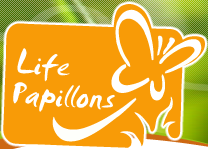Le Damier de la succise - Euphydryas aurinia (Rottemburg, 1775)
1. Anthes, V.N., & Al., 2003 - Wie lässt sich der Rückgang des goldenen Schekenfalters (Euphydryas aurinia) in Mitteleuropa stoppen? Naturschutz und Landschaftsplanung 35. (9). 2003.
2. Anthes, V.N., & Al., 2003 - Combining larval habitat quality and metapopulation structure - the key for successful management of prealpine Euphydryas aurinia colonies. Journal of Insect Conservation 7: 175-175, 2003.
3. Warren, M.S., 1994 - The UK status and suspected metapopulation structure of a threatened european butterfly, The Marsh Fritillary. Biological conservation 67: 239-249, 1994.
4. Boissieu, D.,Chevrier, M., 2001 - Modes de gestion adaptés au maintien d'une espèce protégée: données actuelles concernant Euphydryas aurinia en centre Bretagne. Symbioses, nouvelle série, N°4: 19-25, 2001.
5. Bulman & Al, 2007 - Minimum viable metapopulation size, extinction debt, and the conservation of a declining species. Ecological Apllication, 17(5):1460-1473, 2007.
6. Goffart, P., 2005 - Le Damier de la succise...à la recherche d'habitats. Réussir sa forêt. Faune et flore fiche technique N°1.
7. Holder, E., 2004 - Etude et gestion de la population du damier de la succise du Venec (Finistère). Nature vivante SEPNB. La Fondation.
8. Lafranchis, J., 2003 - Fiches insectes protégés-Le Damier de la succise. Insectes 13, n0130, 2003.
9. Hermann, G., Anthes, N., 2003 - Werden Populationen des Goldenen Scheckenfalters, Euphydryas aurinia (Rottemburg, 1775) durch Beweidung gefördert oder beeinträchtigt?
Le cuivré de la bistorte - Lycaena helle (Denis & Schifermuller, 1775)
1. Agnes, G., 2000 - Schmetterlingszönosen des Feuchtgrünlaudes in des Deutsch Belgischen Hocheifel und Untersuchungen zur Eignung von Indikatorarten für die Differenzierung vernäβter Standorte. Institut für Evolutionsbiologie und Ökologie des Universität Bonn, 2000.
2. Bachelard, Ph., 2007 - Etude des habitats humides de la Narse d'Espinasse par l'utilisation d'un indicateur biologique patrimonial: le cuivré de la bistorte. Société d'Histoire naturelle Alcide d'Orbigny, 2007.
3. Demna, - Le cuivré de la bistorte. Catalogue des espèces et habitats des sites Natura 2000 de la région Wallonne. natura2000.wallonie.be/liste_espece.html.
4. Finger, A., & Al., 2008 - The genetic status of the Violet Copper Lycaena helle - a relict of the cold past in times of global warming. Ecosystem Management, Zurich, Switzerland.
5. Fischer, K., & Al., 1999 - Population structure mobility and habitat preferences of the Violet Copper Lycaena helle in western Germany: implication for conservation. Journal of Insects Conservation,3,43-52, 1999.
Le cuivré des marais - Lycaena dispar rutilus (wernerburg, 1864)
1. Demna, - Le cuivré des marais. Catalogue des espèces et habitats des sites Natura 2000 de la région Wallonne. http://natura2000.wallonie.be/liste_espece.html.
2. Lafranchis, T., & Al., 2001 - Biologie, écologie et répartition du cuivré des marais (Lycaena dispar Haworth, 1803) en Quercy (sud ouest de la France. Linneana Belgica, Pars XVIII, n°1, mars 2001.
3. Martin, L.A. & Pullin, A.S., 2004 - Host plant specialisation and habitat restriction in an endangered insect, Lycaena dispar batavus. I. Larval feeding and oviposition. European Journal of Entomology, 2004.
4. Martin, L.A. & Pullin, A.S., 2004 - Host plant specialisation and habitat restriction in an endangered insect, Lycaena dispar batavus. I. Larval survival on alternative host plants in the field. European Journal of Entomology, 2004.
5. Nicholls, C.N. & Pullins, A.S., 1999 - A comparison of larval survivorship in wild and introduced populations of the Large Copper butterfly (Lycaena dispar batavus). Biological Conservation 93 (3000) 349-358, 1999.







